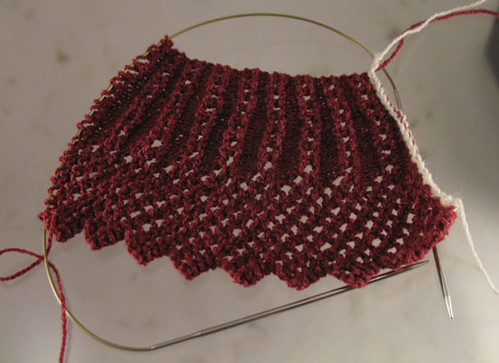Hi Jan,
First… nice work! Secondly, I agree with Elaine: If the
backgrounds were the same, the best choice would be two necklaces
(the ones with stones) and the bracelet shot.
Thirdly, I agree with everything Karen said :-). I do think, though,
that your slate backgrounds are acceptable (just); but they’re not as
optimal as a gradient background would be.
And the big #4: Unfortunately, there are a lot more issues with your
slides than just which three to choose. Take a look at the before and
after images at the following link and then come back and read the
rest of this.
For jurying purposes, it is essential to maximize the size of each
piece relative to the size of the entire image. In other words, there
should be as little as possible of the background and as much as
possible of the jewelry. In your images, there is all kinds of
extraneous background.
In this regard, the most difficult pieces to shoot effectively for
jurying are full necklaces because they will look too small on screen
and it’s difficult to see detail. There are ways to shoot necklaces
to make them appear larger in the frame, for instance by scrunching
them, but this kind of treatment is not always possible.
You made a good beginning with your red necklace by wrapping the
chain but look what I accomplished with a crop. Everything is bigger
and you can still see plenty of the chain. (If I hadn’t been trying
to maintain your photo aspect ratios, I would have cropped even
more!)
With a piece like your amber necklace it’s even tougher, since it
really needs to be seen laid out in its entirety – but that doesn’t
mean it can’t have a whole lot more presence when maximized! Ditto
the bracelets.
Next: If you’re going to take your own photos, you need to learn
more about lighting your jewelry effectively and, perhaps even more
importantly, you need to learn how to use a decent photo editing
application. I use Photoshop Elements (the full Photoshop isn’t
necessary). For your images, I used maybe six Photoshop Elements
tools to brighten, increase the contrast, sharpen, and lighten
background shadows. The result is images that pop and, in the case of
the bracelets, a comparable background to the other two.
The whole thing took me less than an hour, probably less time than
it’s taking me to write this post :-).
A few years ago, I wrote an article on jurying into shows for
Lapidary Journal (now Jewelry Artist) which you might find of
interest, though it’s outdated now:
http://www.lapidaryjournal.com/archive/399bus.cfm
The digital age is here and we all need to learn to negotiate its
intricacies!
Hope this helps.
Beth
